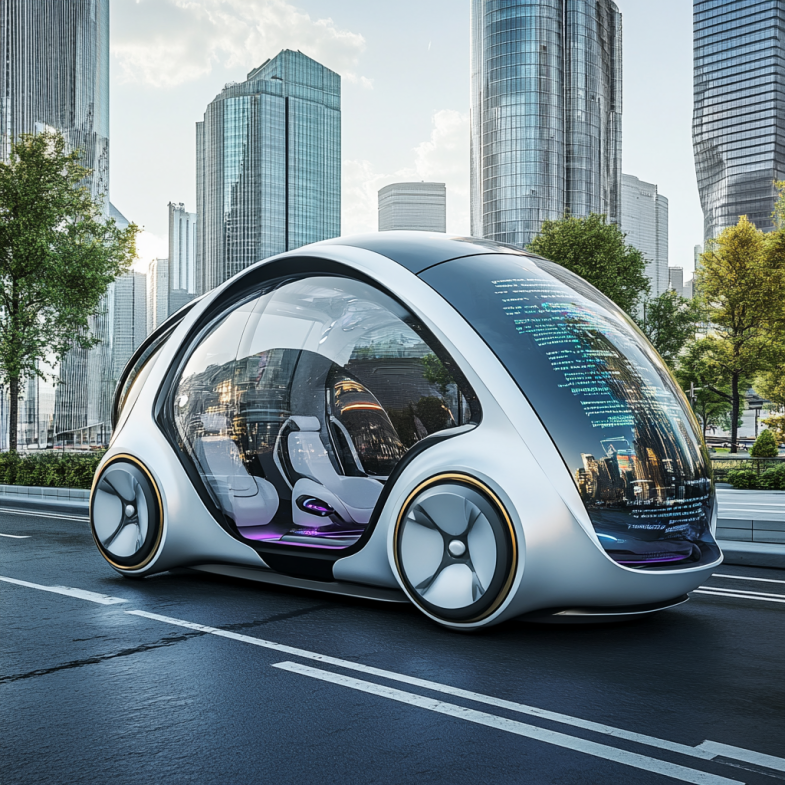As technology advances, autonomous cars are becoming increasingly feasible. These vehicles are capable of driving without human intervention, using artificial intelligence (AI), sensors, and cameras to analyze their surroundings and make decisions. However, despite significant progress, fully autonomous cars are not yet a reality. In this article, we will review the current advances in self-driving technology and try to predict when we will be able to do without drivers.
Chapter 1: Current Advances in Self-Driving
Levels of Autonomy
A scale developed by SAE International is used to rate the degree of autonomy of cars:
Level 0: A human driver has full control of the vehicle.
Level 1: The system assists the driver with a single task, such as speeding or steering.
Level 2: The system can manage multiple tasks simultaneously, such as acceleration, braking, and steering, but the driver must remain alert and ready to intervene if necessary.
Level 3: The car can handle most tasks on its own, but the driver must be willing to take over when asked to do so.
Level 4: The car can handle all tasks without driver intervention in certain conditions, such as city roads or highways.
Level 5: Full Autonomy – The car can drive itself in all conditions without human intervention.
Most commercially available cars are currently at Level 2 or 3, with full autonomy (Level 5) remaining a future goal.
Current Autopilot Systems
Some companies have already made significant progress in developing self-driving systems. For example, Tesla, with its Autopilot system, allows cars to automatically handle steering, acceleration, and braking on highways, but requires driver attention. Google subsidiary Waymo has been testing fully autonomous cars on public roads in some US cities, such as Phoenix, Arizona.
Sensors and Technology
The main components of self-driving systems are sensors, cameras, and AI algorithms. Lidars (Light Detection and Ranging) are used to create a 3D map of the environment, radars detect objects and their distance from the car, and cameras recognize road signs and traffic lights. All this data is processed by AI algorithms that make decisions about the car’s movement.
Chapter 2: Problems and Challenges
Technical Problems
One of the main technical challenges is ensuring the safety and reliability of self-driving systems. Despite significant advances, current systems can make mistakes in complex situations such as poor visibility, unpredictable behavior of other road users, or sudden changes in road conditions. Reaching Level 5 requires further development of technology and the creation of more sophisticated AI algorithms.
Legal and Ethical Issues
Questions about liability for the actions of autonomous cars also remain open. If an autonomous car gets into an accident, who will be held liable – the car manufacturer, the programmers, or the owner? In addition, there are ethical dilemmas, such as choosing between the safety of passengers and pedestrians in the event of an unavoidable accident.
Social Impact
Full autonomy of cars could have serious social impacts. For example, millions of people working in the transportation industry could lose their jobs. This will require the development of new educational programs and measures to support these workers. In addition, the structure of cities and transportation systems will change, which will require the adaptation of infrastructure.
Chapter 3: Future Predictions
Short-Term Predictions (2025)
In the next few years, we can expect further development of Level 2 and 3 self-driving systems. Companies will continue to improve their technology, adding new features and increasing the reliability of the systems. We may also see the first commercial services based on Level 4 autonomous cars, such as robotaxis in restricted areas such as business parks or gated communities.
Medium-term forecasts (2030)
By 2030, many experts expect that Level 4 autonomous cars will be widely available and used in a variety of applications, such as logistics, public transport and taxis. This will lead to a significant reduction in accidents and an improvement in the environment due to more efficient use of vehicles. However, fully autonomous Level 5 cars will still be limited in their use and will require further development of technology and legislation.
Long-term forecasts (2040 and beyond)
By 2040, we can expect to see the emergence of I am fully autonomous Level 5 cars that will be able to drive themselves in all conditions without human intervention. This will lead to fundamental changes in the transportation system and the way people live. Car owners will be able to use their travel time for work, rest or entertainment, and cities will be rebuilt to accommodate the new capabilities of autonomous vehicles. However, this process will take time and will require significant investment in infrastructure and legislation.
Autonomous vehicle technology is advancing rapidly, and we are already seeing significant advances in this area. Although fully autonomous Level 5 cars are not yet a reality, their appearance in the coming decades seems inevitable. However, this will require addressing many technical, legal and social issues. It is important to remember that the implementation of these technologies must be aimed at the benefit of society and take into account the interests of all its members.






